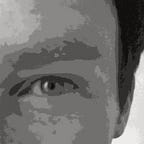Barry Ryan — The Ascent: Sean Kelly, Stephen Roche and the Rise of Irish Cycling’s Golden Generation
Every summer I watch the Tour de France. I should qualify that by saying that, as a former long-term Paris resident, I watch it less for the Tour and more for the France — three weeks of nostalgia as I recognise the familiar paraphernalia and high-street names of the average French town along the route. On the final day I can even catch a glimpse of my old apartment building and local boulangerie as the peloton speeds through the Paris suburbs, over the Seine and towards the Champs-Elysees.
Then again, I suppose everyone who watches the Tour de France sees what they want to see. The thing is now so tainted by drug scandals and drug suspicions that you’d feel like a jackass to make any emotional or rational investment in it. Maybe there’s also a hint of embarrassment and hurt about how we trusted it unquestioningly for so long, effectively duped by the doped. (My own sport of athletics is in a similar place.)
So why am I reading a book about cycling? Because I’m a child of the ‘80s, and in Ireland that involved being immersed in the exploits of Sean Kelly and Stephen Roche. Also, it appeals to the emigrant side of grown-up me; the Tour de France in the 1980s gave us a rare glimpse of Irish people being part of the colour and glamour of life in Europe. Other international Irish icons of the time had followed our traditional English-speaking emigrant routes to success— footballers and television personalities to England, rock groups and track athletes to America, convicts to Australia. But mainland Europe was another planet altogether and, apart from Eurovision, Irish people rarely tried their luck there. It’d be a bit of a stretch if I claim Kelly and Roche’s continental exploits knocked the first domino towards me moving to France, but they certainly were the first Irish people I’d seen living and thriving there. They even spoke French, to such an extent that they now spoke English with a French inflection and a Gallic shrug. (Eight years in Paris didn’t overwrite my soft Irish accent, but I definitely brought back a weapons-grade shrug which I can still deploy to devastating effect.)
Barry Ryan’s excellent book may be about the pre-EPO years, but he doesn’t shy away from the positive tests and negative practices of the time. Drug infringements, such as one by Kelly in 1984, were explained as minor technicalities and reported as footnotes, while astounding achievements were viewed through the stained glass of folklore rather than the magnifying glass of scrutiny. It couldn’t last. Ben Johnson’s steroid bust at the 1988 Olympics swept away any equivocation around performance-enhancing substances.
Irish sport had its own particular awakening — or comedown — ten years later with the rise and fall of swimmer Michelle Smith, who gets a passing mention in Ryan’s narrative. And in the meantime, Italia ’90 had turned mainstream Irish sports interest away from cycling to football.
Ryan takes the only credible approach to all this: he sticks to the facts, which are that Ireland was caught up in a cycling frenzy while following Kelly and Roche, that we didn’t know or want to know about the drug culture, and we soon moved on to something else and started the cycle (no pun intended) all over again. Mass mania, complicit ignorance, repeat offending; ’80s Irish cycling was a very Irish story indeed.
Still, there’s plenty to enjoy in Ryan’s book. He has a great way of adorning factual prose with well-chosen rhetorical flourishes. The sport and the setting lend themselves to cinematic scenes and gripping drama. Plus, he has extensive interviews and great insight from Kelly, Roche and all the other main cast members, especially from Paul Kimmage, one of the most compelling figures in Irish sport and Irish public life.
Roche’s annus mirabilis of 1987 was normally held as the high water mark of the Kelly-Roche era, and Kelly’s one-day classic wins dotted the decade, but it’s hard for us now to look back at any cyclist’s exceptional dominance or epic feats without adding doubts and asterisks. So, for what it’s worth, here’s the last hurrah of that period — Kelly’s hair-raising descent of the Poggio hairpins towards a dramatic win in the 1992 Milan-San Remo, with fantastic commentary by David Duffield of Eurosport.
Like this? Read more: https://medium.com/@aidancurran17
